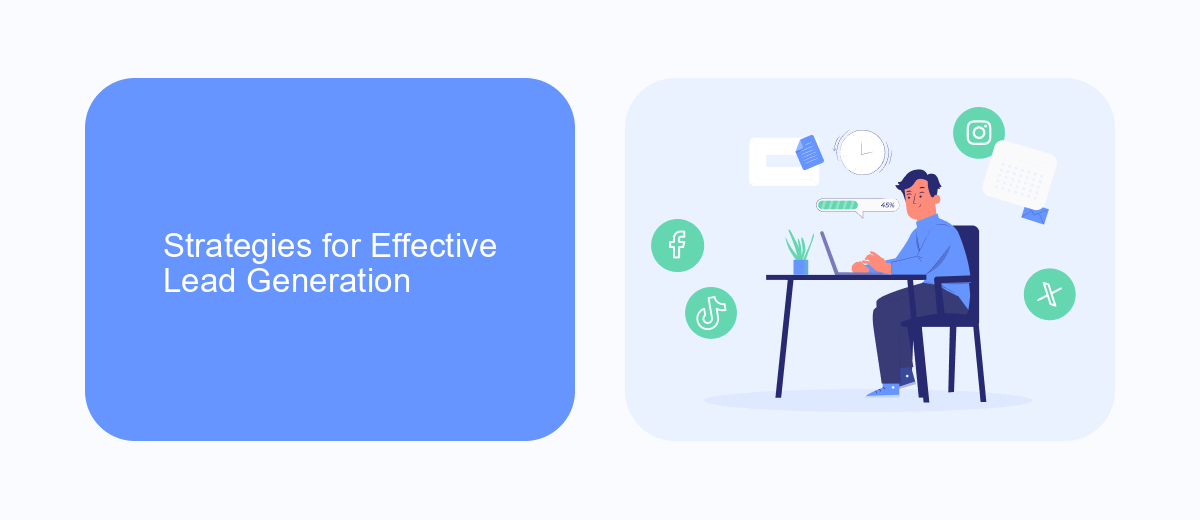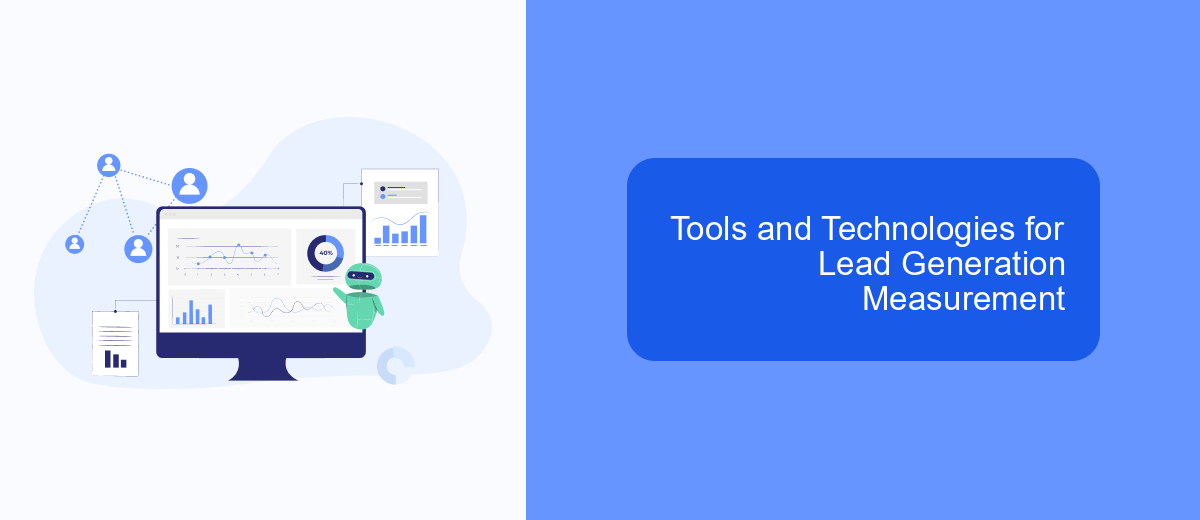Lead generation is a critical component of any successful marketing strategy, serving as the foundation for acquiring new customers and driving business growth. By effectively measuring lead generation efforts, companies can optimize their marketing campaigns, allocate resources more efficiently, and ultimately enhance their return on investment. This article delves into the essential metrics and tools necessary for accurately assessing the effectiveness of lead generation strategies.
Understanding Lead Generation and Its Importance
Lead generation is a crucial aspect of any business strategy that focuses on attracting and converting prospects into potential customers. It involves identifying and nurturing individuals who have shown interest in a company's products or services. By effectively generating leads, businesses can build a robust pipeline of potential clients, which is essential for sustaining growth and increasing revenue.
- Identifying target audiences and understanding their needs.
- Creating valuable content to engage and attract potential leads.
- Utilizing multiple channels such as social media, email marketing, and SEO.
- Implementing lead scoring to prioritize high-quality leads.
- Nurturing leads through personalized communication and follow-ups.
The importance of lead generation lies in its ability to drive business success by ensuring a consistent flow of new opportunities. It allows companies to focus their marketing efforts on individuals who are more likely to convert, thereby optimizing resources and maximizing return on investment. A well-executed lead generation strategy not only boosts sales but also enhances brand awareness and customer loyalty, ultimately contributing to long-term business sustainability.
Strategies for Effective Lead Generation

Effective lead generation begins with understanding your target audience. Conducting thorough market research allows you to identify potential customers' needs and preferences, enabling you to tailor your marketing strategies accordingly. Utilizing content marketing, such as blogs, videos, and social media posts, can attract and engage prospects. Additionally, offering valuable resources like e-books or webinars in exchange for contact information can help capture leads. Personalization is key; by addressing specific pain points and providing solutions, you can build trust and foster strong relationships with potential clients.
Another crucial strategy is leveraging technology to streamline the lead generation process. Automation tools, like SaveMyLeads, can enhance your efforts by integrating various platforms and automating lead data collection. This ensures that no opportunity is missed and allows your team to focus on nurturing relationships rather than manual data entry. Furthermore, implementing analytics tools to track lead behavior and engagement can provide valuable insights, helping to refine your strategies and improve conversion rates. By combining personalized content with advanced technology, businesses can effectively generate and manage leads, ultimately driving growth and success.
Key Metrics for Measuring Lead Generation Success

In the ever-evolving landscape of digital marketing, effectively measuring lead generation success is crucial for businesses aiming to optimize their strategies. Key metrics provide valuable insights into the performance of lead generation efforts, helping businesses identify areas for improvement and make informed decisions.
- Conversion Rate: This metric measures the percentage of visitors who take a desired action, such as filling out a form or signing up for a newsletter, indicating the effectiveness of your lead generation tactics.
- Cost Per Lead (CPL): Calculating the cost involved in acquiring each lead helps in assessing the efficiency of your marketing budget allocation.
- Lead Quality: Evaluating the quality of leads based on their likelihood to convert into paying customers ensures that your efforts are attracting the right audience.
- Lead Velocity Rate: This metric tracks the speed at which leads move through the sales funnel, providing insights into the efficiency of your sales process.
- Return on Investment (ROI): Measuring the ROI of lead generation campaigns helps in understanding the overall profitability and success of your marketing efforts.
By closely monitoring these key metrics, businesses can refine their lead generation strategies, enhance customer acquisition processes, and ultimately drive sustainable growth. Regular analysis and adaptation based on these metrics are essential for maintaining a competitive edge in the market.
Tools and Technologies for Lead Generation Measurement

In today's competitive business landscape, effectively measuring lead generation efforts is crucial for optimizing marketing strategies and maximizing ROI. A variety of tools and technologies are available to assist businesses in tracking, analyzing, and enhancing their lead generation processes. These tools provide valuable insights into customer behavior, campaign performance, and conversion metrics, enabling businesses to make data-driven decisions.
One of the primary benefits of using lead generation measurement tools is the ability to streamline the tracking process. By integrating these technologies, businesses can automate data collection, reducing manual effort and increasing accuracy. This allows marketing teams to focus on strategy development and execution rather than data management.
- CRM Systems: Tools like Salesforce and HubSpot help manage and analyze customer interactions, providing insights into lead sources and conversion rates.
- Analytics Platforms: Google Analytics and Adobe Analytics offer detailed reports on website traffic and lead behavior, helping identify effective channels.
- Marketing Automation Software: Platforms such as Marketo and Pardot automate marketing tasks and provide analytics on campaign performance.
By leveraging these tools, businesses can gain a comprehensive understanding of their lead generation efforts. This knowledge enables them to refine their strategies, improve customer engagement, and ultimately drive more successful conversions. As the digital landscape evolves, staying updated with the latest technologies is essential for maintaining a competitive edge.
- Automate the work with leads from the Facebook advertising account
- Empower with integrations and instant transfer of leads
- Don't spend money on developers or integrators
- Save time by automating routine tasks
Analyzing and Optimizing Lead Generation Performance
Analyzing lead generation performance begins with tracking key metrics such as conversion rates, lead quality, and cost per lead. These metrics provide insights into the effectiveness of your lead generation strategies and help identify areas for improvement. By employing tools like Google Analytics and CRM systems, businesses can gather data on user behavior and lead interactions, allowing for a comprehensive analysis of the lead journey. Regularly reviewing these metrics ensures that you can make data-driven decisions to enhance your lead generation efforts.
Optimization involves refining your strategies based on the insights gained from analysis. This can include adjusting your marketing channels, improving landing page designs, or personalizing content to better engage potential leads. Integrating automation tools like SaveMyLeads can streamline this process by automatically transferring lead data between platforms, reducing manual work and ensuring timely follow-up. By continuously testing and refining your approach, you can maximize the efficiency of your lead generation activities, ultimately driving higher conversion rates and achieving better ROI.
FAQ
What is lead generation, and why is it important for businesses?
How can I measure the effectiveness of my lead generation efforts?
What are some common lead generation strategies?
How can automation improve lead generation processes?
What is the role of integration in lead generation?
Would you like your employees to receive real-time data on new Facebook leads, and automatically send a welcome email or SMS to users who have responded to your social media ad? All this and more can be implemented using the SaveMyLeads system. Connect the necessary services to your Facebook advertising account and automate data transfer and routine work. Let your employees focus on what really matters, rather than wasting time manually transferring data or sending out template emails.

